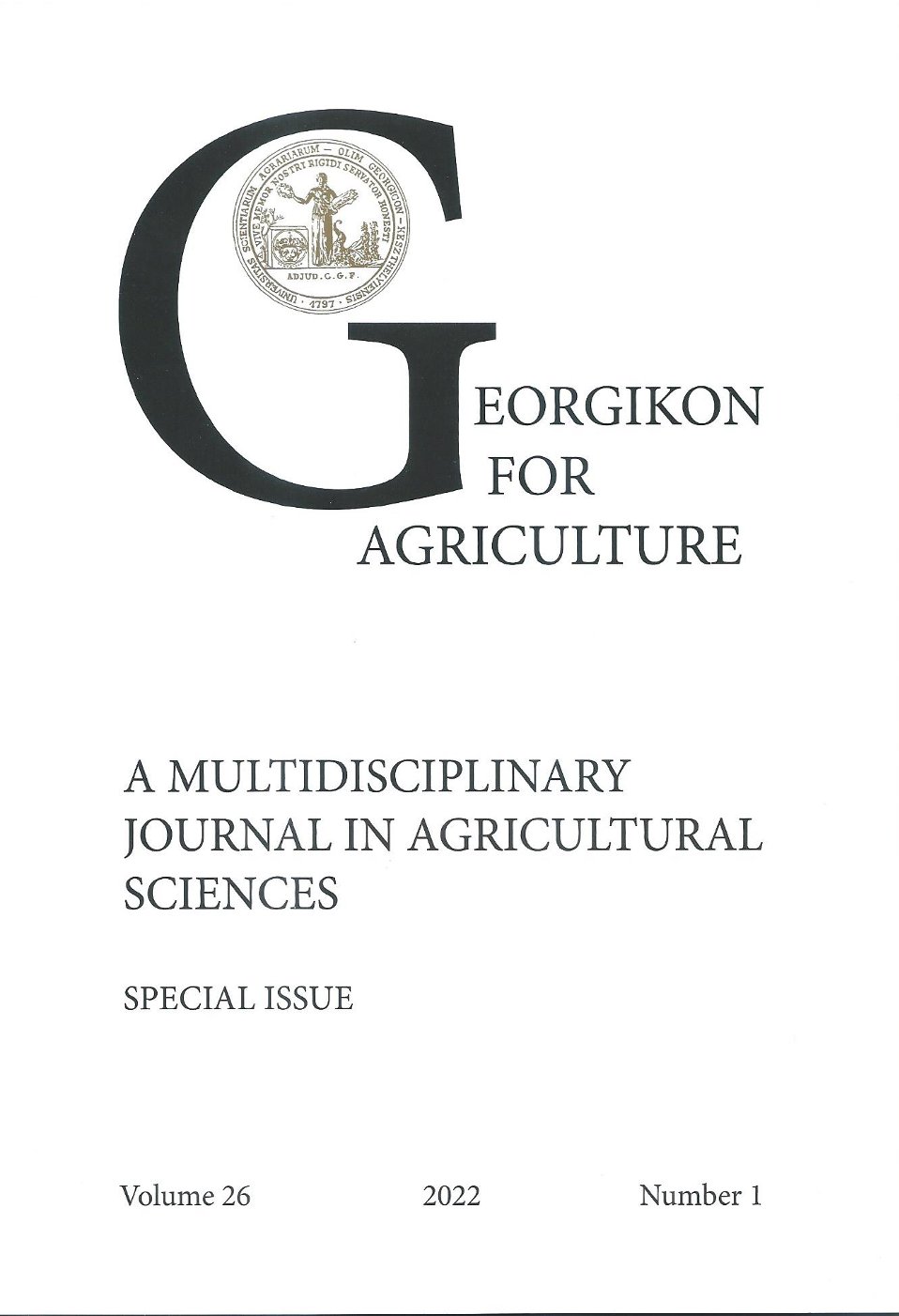A Movento és a Topas 100 EC növényvédő szerek korai interakciós toxicitási vizsgálata fácánembriókon
Keywords:
spirotetramat, penconazole, interaction, ecotoxicology, pheasant embryoAbstract
The aim of this study was to determine the individual and combined toxic effects of Movento, spirotetramat containing insecticide (100 g/l) and Topas 100 EC penconazole containing fungicide (100 g/l) on the early embryonic development of pheasant embryos. The applied concentration of insecticide was 0.75% and that of the fungicide was 0.166%. Emulsions of the test materials were injected in 0.1 ml volume into the air chamber of the pheasant eggs before starting the incubation. On day 3 of incubation in order to study the early stage of development germinal disc was prepared. The embryo mortality and the abnormalities were analysed with Fisher test.
The embryonic mortality and the rate of developmental anomalies were not influenced by the single treatment of test materials. The combined treatment with Movento insecticide and Topas 100 EC fungicide resulted in enhanced embryo toxicity, since the rate of embryonic mortality found in the combination treatment group was significantly (p<0.05) higher than that obtained in the control group. Developmental abnormalities were sporadic in the treated groups. The individual and the combined toxic effects of Movento and Topas 100 EC were embryotoxic, however, teratogenic changes were not detected in pheasant embryo. In the interaction, the toxicity of the insecticide was more pronounced.
References
Almádi K. és Nádasy M. 1996. Növényvédőszer kémia. Kari jegyzet. Keszthely, 27-99.
Baráth Cs., Ittzés A. és Ugrosdy Gy. 1996. Biometria. Mezőgazda Kiadó. Budapest, 37-217. Bogenfürst F. 2004. A keltetés kézikönyve. Gazda Kiadó. Budapest, 42-63.
Budai, P., Szabó, R., Lehel, J., Kormos, É., Takács, A., Tatai, A. and Somody G. 2012. Toxicity of chlorothalonil containing formulation and Cu-sulphate to chicken. Communications in agricultural and applied biological sciences. 77(7). 449-455.
Fejes S. 2005. Egyes nehézfémek és növényvédő szerek egyedi és együttes méreghatásának vizsgálata madárteratológiai tesztben. Doktori (PhD) értekezés. Veszprémi Egyetem, Keszthely, 83-84.
Hill, E.F. and Hoffman, D.J. 1984. Avian Models for Toxicity Testing. Journal Of The American College Of Toxicology. 3(6). 357-376.
Juhász, É., Szabó, R., Keserű, M., Budai, P. and Várnagy, L. 2006. Toxicity of a pendimethalin containing herbicide formulation and three heavy metals in chicken embryos. Communications in agricultural and applied biological sciences. 71. 107-110.
Juhász, É., Szabó, R., Keserű, M., Fejes, S., Budai, P., Kertész, V. and Várnagy, L. 2005. Early embryogenesis study on a dimethoate containing formulation and Cd-sulphate in chicken embryos. Communications in agricultural and applied biological sciences. 70(4). 1075-1078.
Kertész V. 2001. Nehézfémek és PAH-vegyületek embrionális fejlődésre gyakorolt hatása madarakon. Doktori (PhD) értekezés. Szent István Egyetem, Gödöllő, 80.
Lehel J., Szabó R., Gajcsi D., Jakab Cs., Grúz A., Kormos É. és Budai P. 2014. A réz-szulfát és a klórpirifosz interakciós toxicitási vizsgálata csirkeembrión. Magy. Áo. Lapja. 136(8). 494-500.
Lutz, H. 1974. Pesticides et reproduction chez les homeothermes. Bull. Soc. Zool. France. 1. 49-50.
Maus, C. 2008. Ecotoxicological Profile of the Insecticide Spirotetramat. Bayer CropScience Journal. 61(2). 159-180.
Nagy E. 1994. Zárt téri vadtartás. In: Kőhalmy, T. (Szerk.): Vadászati enciklopédia. Mezőgazda Kiadó. Budapest, 514.
Pan, H.P. and Fouts, J.R. 1978. Drug metabolism in birds. Drug Metab. Rev. 7. 1-253.
Szabó R. 2009. Környezetszennyező nehézfémek (réz, kadmium) és herbicidek (Dual Gold 960 EC, Stomp 330 EC) egyedi és együttes toxicitása házityúk-embriókon. Doktori (PhD) értekezés. Pannon Egyetem Georgikon Kar, Keszthely, 77-85.
Szabó, R., Csonka, D., Major, L., Lehel J. and Budai, P. 2020. Toxicity test of individual and combined toxic effects of glyphosate herbicide and heavy metals on chicken embryos. XI. Int. Agric. Symp. AGROFOR International Journal. 5(3). 64-71.
Varga, T., Hlubik, L., Várnagy, L., Budai P. and Molnár, E. 1999. Embryonic toxicity of insecticide Sumithion 50 EC and herbicide Fusilade S on pheasant after individual or combined administration. Acta Vet. Hung., 47(1). 123-128.
Várnagy L. és Budai P. 2003. A mezőgazdasági vegyi anyagok higiéniája és toxikológiája. Veszprémi Egyetemi Kiadó. Veszprém, 64-67.
Várnagy, L., Budai, P., Fejes, S., Susan, M., Fáncsi, T., Keserű M. and Szabó, R. 2003. Toxicity and degradation of metolachlor (Dual Gold 960 EC) in chicken embryos. Communications in agricultural and applied biological sciences. 68(4). 807-811.
Downloads
Published
Issue
Section
License
Copyright (c) 2022 Major László, Budai Péter, Lehel József, Szabó Rita

This work is licensed under a Creative Commons Attribution-NonCommercial-NoDerivatives 4.0 International License.
Cikkre a Creative Commons 4.0 standard licenc alábbi típusa vonatkozik: CC-BY-NC-ND-4.0. Ennek értelmében a mű szabadon másolható, terjeszthető, bemutatható és előadható, azonban nem használható fel kereskedelmi célokra (NC), továbbá nem módosítható és nem készíthető belőle átdolgozás, származékos mű (ND). A licenc alapján a szerző vagy a jogosult által meghatározott módon fel kell tüntetni a szerző nevét és a szerzői mű címét (BY).




